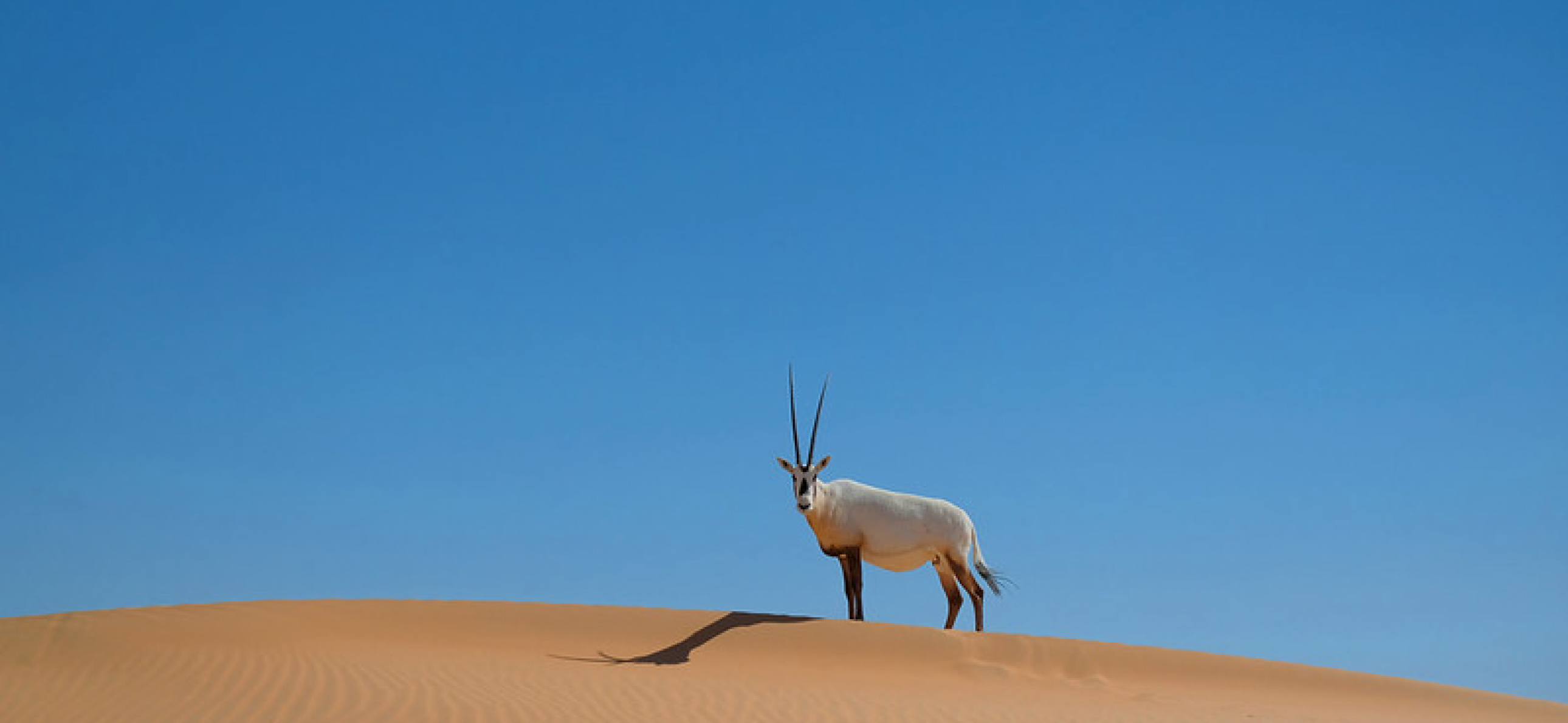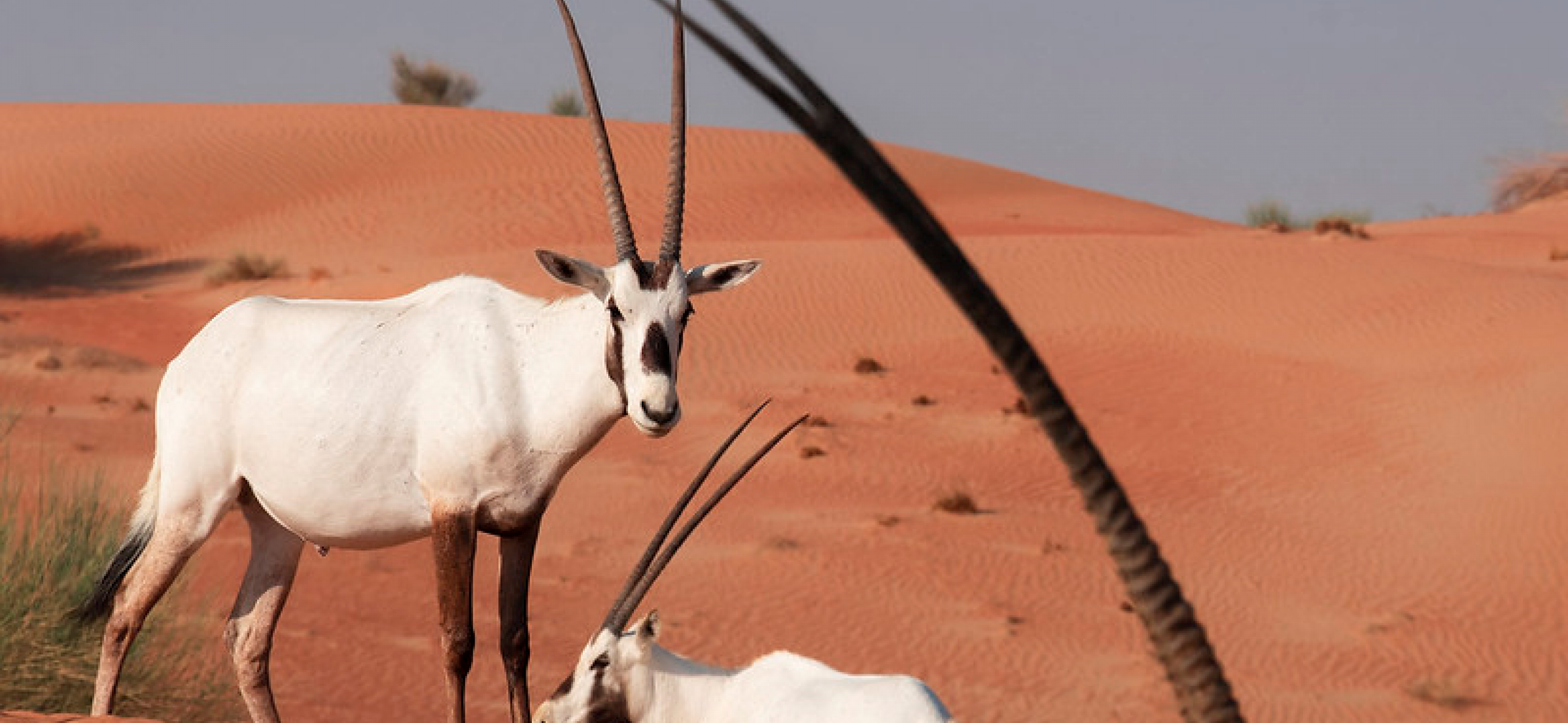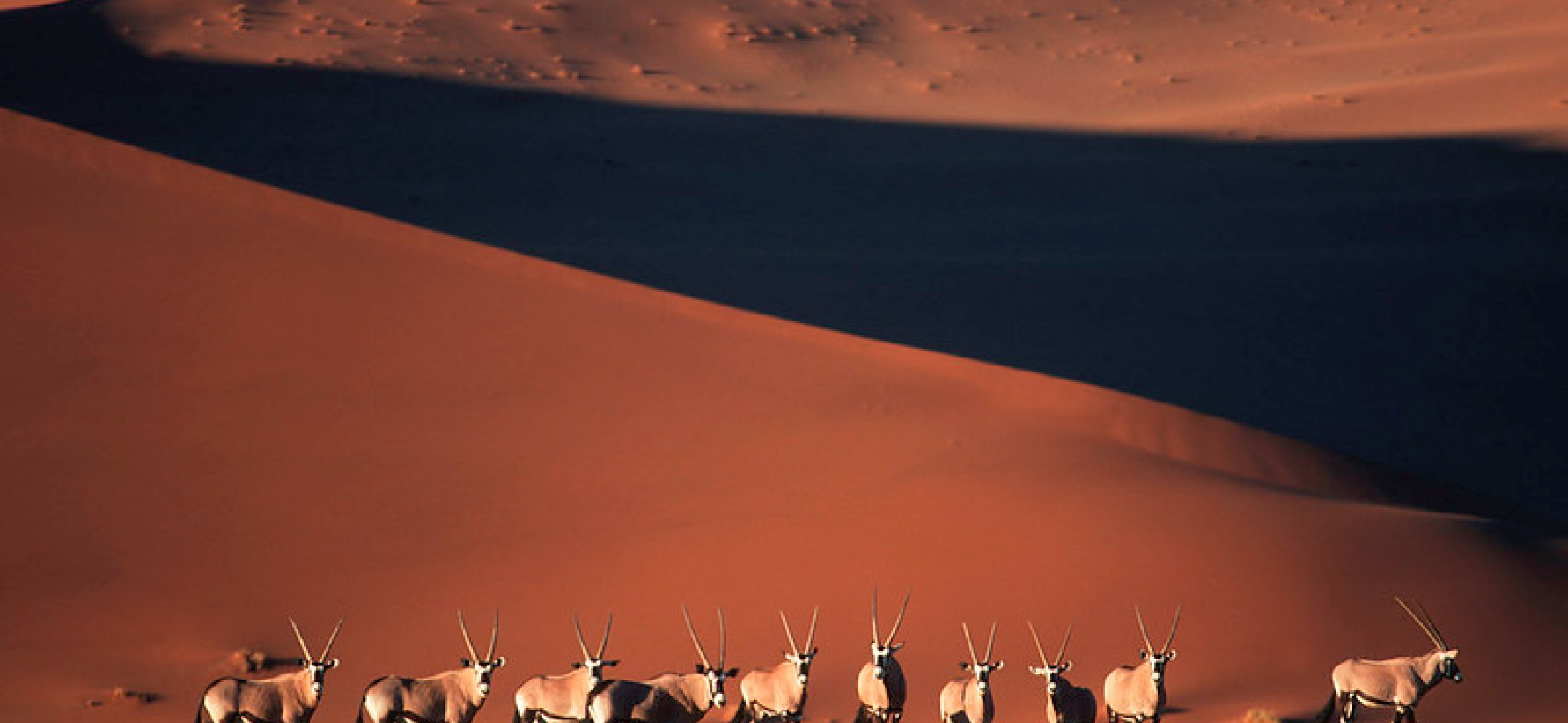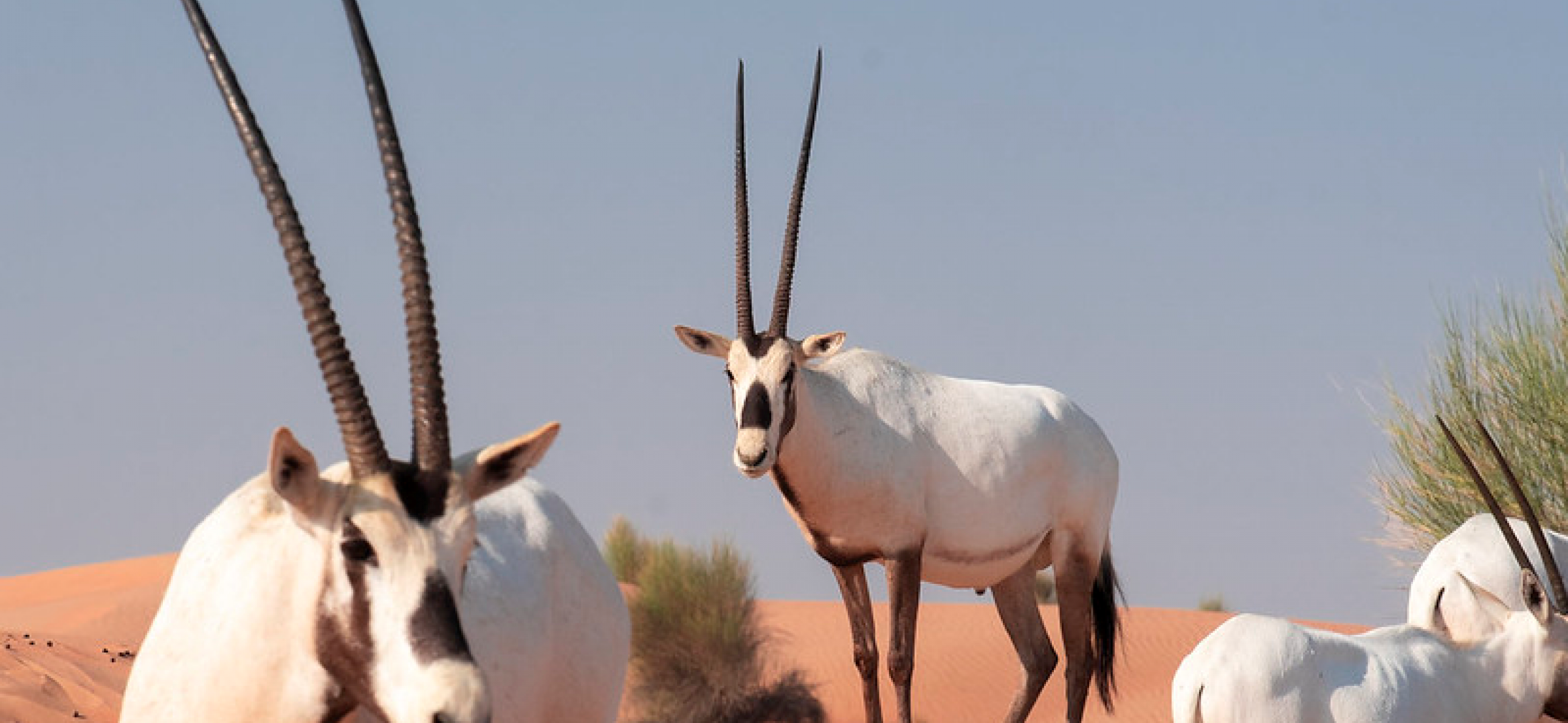Scientific name: Oryx leucoryx
IUCN Red List Status: Vulnerable
About the Arabian Oryx
A beautiful animal called the Arabian oryx roams the middle of the Arabian desert. This desert antelope, with its striking white coat and graceful horns, is a picture of tenacity and survival in one of the most hostile settings on the planet. The Arabian oryx is one of the most adaptable animals in the world, but it is also one of the most endangered; therefore, its continued survival is proof of the effectiveness of conservation efforts.
The magnificent Arabian oryx, also referred to as the white oryx or the sabre antelope, is a resident of the Arabian Peninsula. It is distinguished by its eye-catching white coat, which serves to reflect sunlight and keep the animal cool in the scorching arid environment. The horns of both sexes are long and slender, and they can get as long as 75 cm.
Arabian oryxes are highly adapted to the harsh desert climate, with the ability to go for long periods without water, obtaining moisture from plants and dew instead. They have also developed specialized hooves that can dig into the sand, allowing them to traverse the soft desert terrain with ease.
They are herbivores and feed mainly on grasses, leaves, and herbs. They have a unique digestive system that allows them to extract maximum nutrients from tough desert plants, which often have low nutritional content. They also have the ability to lower their metabolic rate during times of food scarcity, allowing them to conserve energy and survive in the harsh desert environment.
These antelopes are social creatures that gather in groups of up to 100 individuals, each headed by a dominant male. They participate in behaviors like mutual grooming and play as well as a variety of vocalizations and body language to communicate with one another.
The Arabian oryx has been an important cultural symbol in the Middle East for centuries, appearing in artwork, poetry, and literature. Its striking appearance and adaptability to the harsh desert environment have made it an icon of resilience and survival.
Sadly, the Arabian oryx was once extinct in the wild due to overhunting and habitat loss. However, through successful conservation efforts, the species has been reintroduced back into its natural habitat, with several populations now thriving in protected areas in the Arabian Peninsula.
Fun facts:
- They are social animals that live in herds of up to 100 individuals. They communicate with each other through a variety of vocalizations and body language.
- Arabian Oryx are one of the few antelope species that can eat tough desert vegetation, including thorns, without getting injured.
- The Arabian Oryx is known for its distinctive white coat, which helps it to reflect sunlight and stay cool in the hot desert environment.
- The Arabian Oryx were hunted to near extinction in the 20th century, but thanks to conservation efforts, its population has recovered. In 2011, it was removed from the endangered species list.




